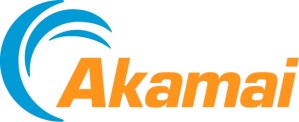
Shares of content delivery network Akamai spiked more than 10 percent overnight on a report from Business Insider that Google was on the verge of acquiring the company—but it appears to have been one of those baseless Internet rumors: today Bloomberg reports the story is not true, citing sources that claim the story is baseless.
Why did the report gain so quickly gain traction with investors? Akamai stock has lost roughly half its value in the last year, and just last week rumors were circulating that the Verizon and even IBM were considering making offers for the company.
Akamai is one of the first Internet content delivery networks, or CDNs. CDNs boost the performance of Web sites and services by parking servers and high-capacity connections at key exchange points on Internet networks, then leasing access to that storage and bandwidth to companies that need to deliver material quickly. Examples of services that benefit from CDNs include companies like Netflix’s streaming video service,and large software companies like Microsoft. In Akamai’s case, the company transparently mirrors a site’s content (either in whole or in part) so it can be served quickly from a data center “close” to a particular Internet user, rather than having to traverse potentially dozens of network nodes—any one of which might be underpowered, overwhelmed, or poorly configured. Akamai currently claims almost 100,000 servers on thousands of networks in more than 70 countries; one of Akamai’s early investors was Apple, and Akamai continues to power downloads from iTunes and Apple’s Web site.
Akamai has been the subject of imminent buyout reports since at least 2005—and none of those reports have had much merit.
(Disclaimer: Digital Trends uses Akamai services to boost the performance of its site.)
Editors' Recommendations
- Google Drive vs. Dropbox: which is best in 2024?
- How to create a slideshow in Google Photos on mobile and web
- How to change your Google background in Chrome
- How to save your data from Google’s purge of inactive accounts
- Google tackles scammers offering malware-laden ‘Bard’ tool


